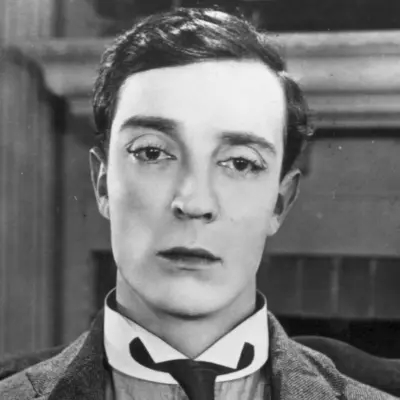Buster Keaton was a silent movie pioneer, but he also became a TV trailblazer who helped with I Love Lucy's launch
-

Keaton was in his mid-50s when he first encountered television in 1948, according to Dana Stevens, in her upcoming book Camera Man: Buster Keaton, the Dawn of Cinema, and the Invention of the Twentieth Century. "Keaton liked everything about television: appearing on it, watching it, describing it, talking about advances in TV technology to whomever would listen," says Stevens. "In 1948, his son Jim, by then a 26-year-old Coast Guard veteran with young children of his own, got a TV set as a gift from his aunt, silent-era superstar Norma Talmadge. It was the first set anyone in his neighborhood had owned, a GE with a ten-inch screen that, as Jim remembered it, 'weighed a ton. My dad came over the first weekend we had it. All afternoon he sat mesmerized in front of this thing. At dinner I remember him saying, "This is the coming thing in entertainment."' ...Soon after encountering TV for the first time, Keaton bought a set for the home he and his wife Eleanor then still shared with his mother and siblings. Thereafter, to visit the Keatons was to hear the TV in the background, always at high volume to compensate for the hearing loss he had suffered since an ear infection during his service in World War I. In between film jobs, he would sit in front of it for hours, playing solitaire, smoking, and offering a running critique of whatever was on to whoever passed through." As Stevens notes, "owning a television in the late 1940s, as Jim Keaton and his father did, was akin to owning a personal computer in the early 1980s: it was a luxury product for early adopters, a technology recognizable to almost everyone yet affordable (or even useful) to relatively few. But with the increased availability of manufacturing materials, advances in function and design, and the ramping up of the consumer economy after World War II, the TV screen soon became the “electronic hearth” it would remain for the rest of the century and well into our own." Stevens notes that I Love Lucy was among Keaton's favorite shows, though he never mentioned it or had a guest-starring role. But while I Love Lucy was being developed, Keaton coached Lucille Ball in a big comedy scene involving a cello for an experimental pilot. The pilot never aired, but it was funny enough to convince CBS to order I Love Lucy. (Ball and Keaton later teamed up for a 1965 Salute to Stan Laurel special a year before his death.) Keaton ended up starring in several of his own variety shows. "In 1954 he was cast in one of the television anthology dramas gaining prestige and popularity at the time," says Stevens. "He played the lead in a half-hour teleplay that was a loose adaptation of Nikolai Gogol’s short story The Overcoat. Titled The Awakening, it was a vaguely Orwellian allegory about a timid clerk in a bureaucratic dystopia who scrimps and saves to replace his shabby coat with an expensive custom-made one. The Awakening, though ham-handed even for its era, gave Keaton a new platform: his performance is not only credible and sympathetic and serious, but startlingly modern. In watching the episode today, it’s remarkable how clearly Keaton seems to understand the genre he’s performing in, even though starkly symbolic two-act dramas written for the small screen were a new form that bore little relation to his stage or screen experience."
TOPICS: Buster Keaton, I Love Lucy, Lucille Ball, Retro TV
More Buster Keaton on Primetimer:
